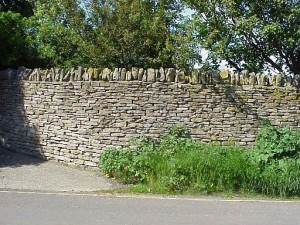
This method of lying stone doesn’t involve any mortar. You see, what can be more sustainable than than? Cement is one of the worst materials for the environment due to the high amount of grey energy that goes int producing it. Lime mortar is better but then – simple structures without any mortar are even better.
The golden era of dry stone constructions (called dykes in Scotland, stop laughing!) is the Middle age when it was the single most popular method of building field boundaries. However, in Scottland, Sweden and some regions of France and Italy there have been attempts at building dry stone houses and bridges. Some of them are still standing (at least partially).
Today many people continue using this old method for building field boundaries and terraces for their rock gardens. If you have a heap of unused stone and you want to give this old method a shot, please consider taking a short course or a workshop first. If build improperly, those structures can be dangerous. On the other hand, if you do everything right – a dry stone structure is almost as steady as a mortared one.